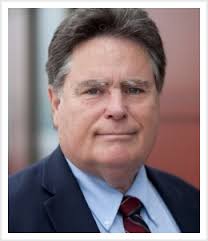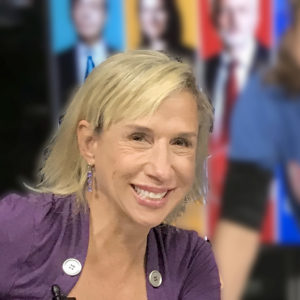Contact Mace News President
Tony Mace tony@macenews.com
to find a customer- and markets-oriented brand of news coverage with a level of individualized service unique to the industry. A market participant told us he believes he has his own White House correspondent as Mace News provides breaking news and/or audio feeds, stories, savvy analysis, photos and headlines delivered how you want them. And more. And this is important because you won’t get it anywhere else. That’s MICRONEWS. We know how important to you are the short advisories on what’s coming up, whether briefings, statements, unexpected changes in schedules and calendars and anything else that piques our interest.
No matter the area being covered, the reporter is always only a telephone call or message away. We check with you frequently to see how we can improve. Have a question, need to be briefed via video or audio-only on a topic’s state of play, keep us on speed dial. See the list of interest areas we cover elsewhere
on this site.
—
You can have two weeks reduced price no-obligation trial for $199. No self-renewing contracts. Suspend, renew coverage at any time. Stay with a topic like trade while it’s hot and suspend coverage or switch coverage areas when it’s not. We serve customers one by one, 24/7.
—
Tony Mace was the top editorial executive for Market News
International for two decades.
Washington Bureau Chief Denny Gulino had the same title at Market News for 18 years.
Similar experience undergirds our service in Ottawa, London, Brussels and in Asia.

President
Mace News

D.C. Bureau Chief
Mace News

Federal Reserve
Mace News

Reporter and expert on the currency market.
Mace News

Reporter and expert on derivatives and fixed income markets.
Mace News

Financial Journalist
Mace News

Reporter, economic and political news.
Japan and Canada
Mace News
– Some Talk of Eventual Rate Cuts; Others More Reticent
By Steven K. Beckner
(MaceNews) – Federal Reserve officials have continued this week to express caution about changing monetary policy from the “moderately restrictive” stance it has been in since the Fed completed 100 basis points worth of short-term interest rate cuts in December.
President Trump has been leaning heavily on Fed Chair Jerome Powell to cut the federal funds rate immediately, but neither he nor any of his Fed colleagues have given any sign of bending to that pressure.
Some officials sound more inclined to lean toward eventual rate cut, but the general consensus is that, for the foreseeable future, the economic outlook remains much too uncertain to consider rate cuts until greater “clarity” is gained about the impact of tariff, fiscal and other policy changes emanating from the Trump administration and Congress.
Divergences have emerged among policymakers, as reported last week. Some, such as Chicago Federal Reserve Bank President Austan Goolsbee and Fed Gov. Christopher Walker, seem more willing to entertain a resumption of rate cuts later this year in the belief that tariff effects on inflation will not be large or lasting. Others are more concerned about the persistence of elevated inflation and the risks of rising inflation expectations.
But these nuances of difference are largely mute for the time being, as all endeavor to make sense of the economic outlook amid immense uncertainty about non-monetary policies.
On Tuesday, Goolsbee, a voting member of the Fed’s policy-making Federal Open Market Committee, said that once trade-related uncertainties clear up, rates could go “a fair bit below where they are today,” but in the meantime, he said the economy is on a “stagflationary” trajectory, for which the Fed has no “automatic playbook.”
Fed Governor Lisa Cook was ambivalent about how monetary policy might unfold Tuesday, saying tariffs have imposed “an uncertainty tax” on the economy and, by implication, the Fed.
She said risks have risen for both inflation and unemployment and said she and other FOMC voters “will need to carefully balance” the two before deciding how to adjust policy.
Different policy paths, including rate hikes, are “possible,” she added.
Atlanta Fed President Raphael Bostic called the economy “broadly healthy” in an essay released by his bank on Tuesday, but expressed concern about disinflation “stalling.” And, with “heightened uncertainty” about how trade and other policy changes will affects employment and inflation, he urged “patience” on changing monetary policy.
Also Tuesday, Dallas Fed President Lorie Logan advocated focusing primarily on inflation, not unemployment as a long-term monetary strategy.
When the FOMC meets again June 17-18, participants will be revising their quarterly Summary of Economic Projections, including its “dot plot” of funds rate projections. Fed watchers are eager to see how much, if any, easing Fed officials expect to do this year. In their March SEP, the 19 FOMC participants foresaw two 25 basis point rate cuts, projecting a median funds rate of 3.9% (4.75 – 5.0%) by the end of 2025. They projected the funds rate would then fall to 3.4% in 2026 and 3.1% in 2027.
At its lasting meeting on May 7, the FOMC voted unanimously to leave the funds rate unchanged in a target range of 4.25% to 4.5% for the third straight meeting. Although it again described economic activity and labor markets as “solid,” the FOMC cited “further” increases in uncertainty and made a key shift in its policy language, declaring, “the risks of higher unemployment and higher inflation have risen.” Powell warned, “We may find ourselves in the challenging scenario in which our dual-mandate goals are in tension.”
For now, “the economy is growing at a solid pace, the labor market appears to be solid. Inflation is running a bit above 2%. So, it’s an economy that’s been resilient and in good shape….” Powell told reporters. “And so, we think that leaves us in a good place to wait and see. We don’t think we need to be in a hurry. We think we can be patient.”
Since then, multiple Fed officials have continued to speak in that “patient,” unhurried mode, as they did again this week.
Goolsbee has been maintaining that underlying, pre-tariff economic trends – a combination of relatively low unemployment and disinflation – remain intact and that, once tariff tensions are resolved, the Fed should be able to get back to making monetary policy less restrictive.
On Monday, he said tariffs had kicked up “dirt in the air,” but added, “I still think underneath there we basically are on that path” to lower rates. “If we can get past this bumpy period that the dual mandate still looks pretty good to me.”
Goolsbee continued in that vein when speaking Tuesday at the Corridor Business Journal event in Cedar Rapids, Iowa.
Echoing the May FOMC statement, he said the economy is moving in “a stagflationary direction.” in which “employment goes down, prices go up from tariffs.” In that situation, he said “there’s not an automatic playbook of what does the central bank do if both sides get worse at the same time.”
But Goolsbee reiterated that once the “dirt in the air” clears and the economy returns to its pre-trade war trend, rates should be able to go “a fair bit below where they are today.” He was quick to add that “with the uncertainty, I can’t express that with too much confidence.”
Cook too sounded cautiously optimistic about the economy’s ultimate path but was less willing to talk about a return to rate cuts, although she didn’t rule that out.
“The U.S. economy is still on a firm footing, but uncertainty has notably increased since the beginning of the year,” she said in remarks prepared for delivery to the Council on Foreign Relations. “The latest data indicate that unemployment continues to be low, while inflation remains somewhat above the (FOMC’s) 2% goal.”
However, Cook said trade policy changes “appear to be increasing the likelihood of both higher inflation and labor–market cooling.”
“In this environment, monetary policy will need to carefully balance our dual-mandate goals of price stability and maximum employment,” she continued, adding that the FOMC “must consider a range of possible scenarios about the state of the economy.”
Asked whether the FOMC might even need to raise the funds rate, Cook replied, “We have to be open to all possibilities .… We don’t know how tariffs are going to play out, (so) all three scenarios could be possible – cutting, staying or hiking .…”
Like many of her colleagues, Cook stressed the importance of holding down inflation expectations.
“One-year inflation expectations have risen sharply this year,” she noted. “So far, most measures of longer-term inflation expectations have moved less significantly,” but “I will continue to monitor these data carefully.”
Cook suggested the FOMC will have a tough time deciding how to set rates in coming months. “While the economy remains solid, the economic environment could become highly challenging for monetary policymakers,” because “trade policy changes and the response of financial markets, firms, and consumers suggest risks to both sides of our dual mandate.”
Even so, she echoed Powell in saying “the current stance of monetary policy is well positioned to respond to a range of potential developments.
Bostic, a non-voter this year, has recently said he foresees no more than one rate cut this year. If anything, he was even more restrained in an essay published Tuesday by the Atlanta Fed.
Bostic wrote that ‘the macro-economy is reasonably strong overall as uncertainty persists. Inflation remains somewhat above the (FOMC’s) 2% target, while the labor market shows signs of slowing but is still broadly stable.”
But in addition to trade policy, he said “fiscal, tax, and regulatory policy are all likely to see big changes in the coming months.”
Although “the labor market still appears broadly healthy,” Bostic said “there are some indications of potential weakness.” At the same time, he said “progress in lowering price increases mostly stalled.”
Bostic said Fed policymakers will have to ask themselves: “if tariffs do spur price increases, will it be a one-time bump or the start of a more protracted inflationary episode? If the first, then monetary policy can likely look past it. If it’s the second, then there is a risk that inflation and higher inflation expectations could get entrenched in a more enduring way, which could warrant a policy response.”
“There is a great deal of uncertainty out there, making it quite difficult to forecast the economy with confidence,” he continued. “Given that, I continue to believe the best approach for monetary policy is patience.”
“As the economy remains broadly healthy, we have space to wait and see how the heightened uncertainty affects employment and prices, Bostic went on. “So, I am in no hurry to adjust our policy stance.”
Later Tuesday, Logan focused more broadly on the need to curb inflation in a Fed Listens event on the Fed’s “framework’ review in El Paso, Texas.
“We are now in a higher-rate environment, and the post-pandemic experience provides ample evidence of the potential for inflation to surge far above target,” she said in her text, adding that “it seems more appropriate to me to focus on achieving our inflation target going forward, rather than trying to make up for past shortfalls of inflation.”
“In the labor market, I am inclined to pay more attention to increases of employment above the maximum sustainable level, not just shortfalls from that level,” she added.
Logan contended that “to have a sustainably strong economy, a central bank has to make
decisions with the long run in mind.”
“In the short run, a central bank could juice employment by cutting interest rates,” she continued. “People might enjoy that for a little while, but over time, excessive rate cuts would trigger a spiral of inflation. And those rising prices would wipe out whatever temporary benefits people experienced from a hot labor market.”
These Tuesday comments come on the heels of similar remarks earlier in the week.
On Sunday, Gov. Christopher Waller looked forward to potential rate cuts “later this year,” but only if certain assumptions about tariffs are realized.
As in April, he outlined two possible scenarios: a “large tariff scenario,” in which higher tariffs might push both inflaiton and unemployment to 5%, and a “smaller tariff scenario,’ in which more modest tariffs would have less impact on both ifnlation an d unemployment. In both scenarios, he assumes “tariff increases would lead to a one-time boost to prices that would temporarily raise inflation, after which inflation would return to its underlying rate.”
“Crucial to this judgment is my assumption that longer-term inflation expectations remain anchored.,” Waller emphasized.
Citing recent progress on trade negotiations, he said his “base case” is now “somewhere in between” those two scenarios,” although he added, “wherever things end up on a continuum between my ‘large’ and ‘smaller’ scenarios, I do expect tariffs will result in an increase in the unemployment rate that will, all else equal, probably linger.”
Waller, who has been mentioned as a potential successor to Powell, sees “the risks of my large tariff scenario having gone down,” although “there is still considerable uncertainty about the ultimate levels, and thus about the impact on the economic outlook,”
“Hard data on the fundamentals of the economy lately has been mostly positive and supportive” of the FOMC’s economic objectives, he continued. “As of today, I see downside risks to economic activity and employment and upside risks to inflation in the second half of 2025, but how these risks evolve is strongly tied to how trade policy evolves.”
Waller is one who is inclined to “look through” tariff-related price increases so long as inflation expectations remain anchored. While expecting tariffs to boost inflation indices in coming months, he “expect(s) the effects on inflation to be temporary….”
At the same time, he noted “a dramatic disparity between household measures of inflation expectations and market-based measures. While the University of Michigan’s consumer sentiment surveys “show that both near- and longer-term inflation expectations have increased strikingly,” he noted, “inflation expectation measures based on prices of nominal versus inflation-adjusted securities have not increased very much.”
But Waller said he’s more inclined to trust market gauges of inflation expectations. “(I)t seems hard to believe that the high inflation expectations we are seeing in consumer surveys will lead to large nominal wage increases and a second-round burst of inflation.”
Using those premises, Waller was hopeful of the FOMC being able to justify monetary easing. “Assuming that the effective tariff rate settles close to my lower tariff scenario, that underlying inflation continues to make progress to our 2 percent goal, and that the labor market remains solid, I would be supporting “good news” rate cuts later this year.
–ISM Manufacturing Index at 48.5 Vs. 48.7 in April, Below Consensus at 49.1
–ISM New Chair Spence: Agree with Predecessor Fiore that US Economy Not Yet in Recession but PMI Moving in That Direction
–Spence: Manufacturing Sector Will Continue Struggling Until There is More Certainty Over US Trade Policy
–Spence: Layoffs Main Option for Firms as They Reduce Workforces
By Max Sato
(MaceNews) – U.S. manufacturing activity was in contraction for the third straight month in May as the outlook for growth and inflation remains uncertain amid the unabating protectionist U.S. trade policy under President Trump, prompting firms to restrain output and trim payrolls. Stiff import duties and frequently changing tariff numbers are also wreaking havoc on supply chains and keeping costs high.
The data released Monday by the Institute for Supply Management showed that the ISM manufacturing sector purchasing managers’ index dipped 0.2 percentage point to a six-month low of 48.5 in May after slipping 0.3 point to 48.7 in April. It came in weaker than the median economist forecast of 49.1. The PMI was in slight expansion at 50.3 in February and 50.9 in January, the first time the index had popped above the neutral line of 50 since October 2022 (50.3).
“Contraction in most of the indexes that measure demand and output have slowed while inputs have started to weaken,” Susan Spence, chair of the ISM Manufacturing Business Survey Committee, said in a statement. “Slower supplier deliveries have been driven by tariff concerns and advancing material deliveries; such shipments slowed or stopped after tariffs were deployed, leading to a drawdown of manufacturing inventories.”
“Layoffs were the primary measure, an indication that staff shrinking continues to be urgent,” she said. Firms continue to reduce head counts through layoffs, attrition and hiring freezes and a roughly 1-to-1.4 ratio of hiring versus staff-reduction comments is worse than in April (1 to 1), indicating an acceleration of head-count reductions due to uncertain near- to mid-term demand, according to the ISM.
“The manufacturing economy continues to struggle and it’s going to continue to struggle until there is more certainty around what’s going to happen to tariffs,” Spence told reporters. “Panelists for the sixth month in a row have talked about tariff concerns as the biggest issue,” she said. “86% of the headline comments have mentioned tariffs, that is up from 82% (in April).”
Spence replaced Timothy Fiore who retired from the chair position at the end of May. Spence was vice president of the centralized sourcing and procurement group at FedEx Corp. from October 2013 until she retired from the firm in July 2023.
“I absolutely agree with Tim,” Spence said, adding they shared similar supply management backgrounds. “Certainly not yet in recession. We still feel that the economy overall over a longer period of time is still in expansion.”
The ISM May report showed that the U.S. economy continued in expansion for the 60th month after one month of contraction in April 2020. An ISM purchasing managers index for the manufacturing sector above 42.3 in the long run generally indicates a domestic economic expansion.
“As it is, 42.3 is the number we look after over time, “Spence said. “If it keeps going down and it has toward that, we will eventually get there. We are really hopeful that the tariff uncertainty can come to a conclusion and that the purchasing managers that are working so hard to deal with this whiplash can focus on the normalness.”
Spence was asked whether she agreed with Fiore’s view provided last month that he didn’t think the U.S. economy was in recession but that the ISM manufacturing PMI indicated it was moving in that direction. Last month, Fiore also told reporters that new orders from both domestic and overseas customers were down, due to uncertainty over near-term demand as well as conflicts about who should pay for the extra costs generated by the tariffs on imports from around the world.
Quoting the University of Michigan’s consumer sentiment index at a final 52.2 in May, but sharply down from 57.0 in March and 64.7 in February, Spence said consumers working in the auto industry are now being cautious about spending in light of more layoffs.
The ISM May survey showed the Trump tariffs first hit the auto and metals industries with 25% duties but that the impact of the U.S. trade policy had become more widespread and the unpredictable nature of Trump’s trade agenda is causing chaos on the supply chain frontline.
“There is continued softening of demand in the commercial vehicle market, primarily related to higher prices and economic uncertainty,” a transport equipment maker said. “The impact of ever-changing trade policies of the current administration has wreaked havoc on suppliers’ ability to react and remain profitable.” Vehicle manufacturers have already rolled price increases into their products to protect their bottom lines but have not been as cooperative with their supply bases, the firm said, concluding, “This has resulted in a high occurrence of suppliers falling into financial distress.”
“Tariff uncertainty is impacting new international orders,” a fabricated metal producer said. “Tariffs are also the main reason our Asia customers are requesting delayed shipments.”
A machinery maker told the ISM: “There is continued uncertainty regarding market reaction to the recently imposed tariffs and resulting actions by other countries. The rare earth restrictions being imposed are of high concern in the near term.”
“Government spending cuts or delays, as well as tariffs, are raising hell with businesses,” a firm from the computer and electronic products category said. “No one is willing to take on inventory risk.”
“Uncertainty due to the recent tariffs continue to weigh on profitability and service,” a paper products maker said. “An unresolved (trade deal with) China will result in empty shelves at retail for many do-it-yourself and professional goods.”
President Trump initially slapped 25% tariffs on Canadian and Mexican imports to the U.S. and an additional 10% on China over illegal immigration and drug trafficking for which he blames those countries. The duties on imports from China were jacked up to 145% in April, triggering a 125% Chinese levy on some U.S. goods. But Washington and Beijing have suspended all but 10% of their tariffs for 90 days, starting on May 14. They have cancelled other retaliatory levies, lowering U.S. tariffs on Chinese imports to 30% and Chinese tariffs on U.S. imports to 10%.
On April 2, Trump announced most countries would face a 10% baseline tariff on all goods entering the U.S.
Among the five subindexes that directly factor into the manufacturing PMI, the new orders index: 47.6 vs. 47.2 in April. It contracted for the fourth consecutive month in May after three consecutive months of expansion. The latest reading remains below the 12-month moving average (48.6). The index hasn’t indicated consistent growth since a 24-month streak of expansion that ended in May 2022.
The production index: 45.4 vs. 44.0. Prior to the first two months of 2025, the last time the index registered above 50 was in April 2024 (50.7).
The employment index: 46.8 vs. 46.5. It rose for the second straight month but was in contraction for the fourth straight month after a slight expansion in January (50.3) and seven straight months of contraction before that.
The supplier deliveries index (the only one that is inversed): 56.1 vs. 55.2. Delivery performance of suppliers to manufacturers was slower for a sixth straight month. The index hit the highest (the slowest deliveries) since 57.3 in June 2022. It follows a contraction (which indicates faster delivery) in November 2024, preceded by four consecutive months of slower deliveries. After a reading of 52.4 in September 2022, the index went into contraction and remained there for 20 out of 21 months, with February 2024 the exception.
The manufacturing inventories index: 46.7 vs.50.8. It is a four-month low. The readings in April and March (53.4) were the index’s highest since December 2022 (51.4). Prior to March 2025, the last time the index was above 50 was in August 2024 (50.2).
Among other subindexes, the prices paid index: 69.4 vs. 69.8 in April and 69.4 in March. The recent figures were the highest since 78.5 recorded in June 2022, when price pressures were easing month by month. The latest reading indicates raw materials prices increased for the eighth straight month after a decrease in September 2024.
The new export index: 40.1 vs. 43.1. It remains the lowest since 39.5 in May 2020, when it began to pick up from the pandemic-triggered record low of 35.3 in April 2020. It contracted for the third month in a row in April after expanding for two consecutive months. The 6.5-point decrease in April 2025 was the largest since April 2020, when the index dropped 11.3 points.
The import index: 39.9 vs. 47.1. The Trump tariffs pushed the index to a 16-year low. It was the lowest since 38.5 recorded in May 2009, when the world was recovering from a sudden plunge in demand sparked by the U.S. credit crisis following the collapse of Lehman Brothers in September 2008. The index has dropped 12.7 percentage points in three months to May 2025.
– Divergent Views Have Emerged But for Now Officials United on Need For Patience
By Steven K. Beckner
(MaceNews) – As the Federal Reserve approached its mid-year monetary policy meeting, Fed officials have given few signs this week that they are prepared to change their “moderately restrictive” interest rate settings any time soon.
While officials are largely united on the need to stand pat for now, divergent views have emerged on how the Fed should proceed going forward.
Fed officials have spoken carefully amid heightened uncertainty about how the Trump administration’s trade and other policies will affect economic and financial conditions.
Minneapolis Federal Reserve Bank President Neel Kashkari, a voting member of the Fed’s policy-making Federal Open Market Committee, said Tuesday the FOMC should hold rates steady until it becomes more clear how tariff and other policies will affect the economic outlook.
As things now stand, understanding the impact of Trump policies is like “driving in the fog,” Richmond Fed President Tom Barkin said the same day.
While some Fed officials have indicated a willingness to ease policy to counter softening of economic activity and employment, others have shown greater concern about inflationary impulses arising from tariffs.
New York Fed President John Williams, for instance, said Wednesday the Fed must be ready to “respond relatively strongly” if inflation persistently deviates from its 2% target and inflation expectations become unhinged.
Chicago Fed President Austan Goolsbee, another FOMC voter, said Thursday that interest rates could go lower if the economy returns to a state of full employment and declining inflation, but said that currently doubts about the impact of tariffs is making decision making difficult for business leaders and policymakers.
San Francisco Fed President Mary Daly echoed Chair Jerome Powell in calling the economy “solid” and saying monetary policy is “in a good place” to respond to economic developments once those become more clear but said that for the time being the Fed has “plenty of time” to decide what that response should be.
Still later Thursday, Dallas Fed President Lorie Logan suggested the Fed may need to stay on hold for months, saying it could “take quite some time” for the FOMC to diagnose which way the “balance of risks” is going.
President Trump, meanwhile, has exerted considerable pressure on the Fed to lower rates, but his comments, not to mention insults, haven’t made Powell and company any more willing to ease credit sooner than they think appropriate. To a man (or woman) officials have declared their reluctance to alter what they consider an appropriate and “well positioned” monetary stance until they achieve “greater clarity” or less “uncertainty’ about how Trump trade and other policies will affect the economy.
Several officials have, however, allowed for the possibility that Trump deal-making with various trading partners could clear the air and brighten the economic outlook.
Mirroring those more hopeful sentiments, Wall Street began the week with a major rally after the administration delayed imposition of a 50% tariff on European Union products. Amid concern about federal deficit spending and the national debt, bond yields remain elevated, but are down from their peak. The 10-year Treasury note yield, which spiked to 4.6290% on May 22, traded down to 4.42% Thursday.
When the FOMC last met on May 7, it voted unanimously to leave the federal funds rate unchanged in a target range of 4.25% to 4.5% for the third straight meeting, after cutting its policy rate 100 basis points over the last three meetings of 2024.
The FOMC continued to describe economic activity and labor markets as “solid,” but took note of “further” increases in uncertainty. It altered its balance of risks language to warn that “the risks of higher unemployment and higher inflation have risen.” Referencing that new language, Powell warned, “We may find ourselves in the challenging scenario in which our dual-mandate goals are in tension.”
But for now, he said, “we are not in this situation,” Indeed, “the economy is growing at a solid pace, the labor market appears to be solid. Inflation is running a bit above 2%. So it’s an economy that’s been resilient and in good shape….”
“And so, we think that leaves us in a good place to wait and see,” Powell said. “We don’t think we need to be in a hurry. We think we can be patient.”
Minutes of the May 6-7 FOMC meeting reconfirmed, if there was any doubt, that there is no rush to cut rates: “(P)participants agreed that with economic growth and the labor market still solid and current monetary policy moderately restrictive, the Committee was well positioned to wait for more clarity on the outlooks for inflation and economic activity. Participants agreed that uncertainty about the economic outlook had increased further, making it appropriate to take a cautious approach until the net economic effects of the array of changes to government policies become clearer.”
The minutes did, however, reveal some divisions among participants, revealing that “almost all participants commented on the risk that inflation could prove to be more persistent than expected” and that “a few participants additionally noted that higher uncertainty could restrain business and consumer demand and that inflationary pressures could be damped if downside risks to economic activity or the labor market materialized.”
There doesn’t seem to have been much change in attitudes since the FOMC last met, judging from Fed officials’ comments this week.
Nor has the outlook clarified decisively. Almost daily, new wrinkles in multi-faceted trade negotiations with a host of nations has caused the economic outlook to change, either for better or worse – making it hard for the FOMC to forecast.
Kashkari openly talked about what he called “a healthy debate” among Fed officials in Tuesday remarks in Tokyo. While some of his colleagues are inclined to “look through” presumed temporary tariff impacts, Kashkari said he and others worry trade disputes could take “months or years” to resolve and that “there could be tit-for-tat tariff increases as trading partners respond to one other.”
He advocated leaving rates unchanged “until there is more clarity on the path for tariffs and their impact on prices.”
“I find these arguments more compelling given the paramount importance I place on defending long-run inflation expectations,” Kashkari added.”
Others, such as St. Louis Fed President Alberto Musalem, have preferred to speak of alternate scenarios, in which the Fed might choose to be more or less restrictive depending on the strength of growth and employment; the persistence of inflation and the level of inflation expectations
A number of officials, including Powell himself, have spoken of taking a
“balanced approach” should the Fed’s dual mandate goals diverge, If for example unemployment were to rise above what the Fed considers its longer term estimate of the full employment level even as inflation exceeds target, the Fed would tend to focus on fighting joblessness instead of inflation.
Like others, Williams stressed the nebulous nature of current conditions Wednesday saying, “Uncertainty has risen pretty significantly.” But he seemed to put more emphasis on inflation risks.
“We have to be very aware that inflation expectations could shift in any way that could be detrimental,” the FOMC vice chairman said in Tokyo. “You want to avoid inflation becoming highly persistent because that could become permanent, and the way to do that is to respond relatively strongly” if inflation starts to become more elevated relative to the 2% target.
Goolsbee also stressed the high level of uncertainty he and his colleagues are having to cope with at a Mackinac (Michigan) Policy Conference.
Ordinarily, the Fed bases monetary policy decisions in whatever trade or fiscal “conditions” it is presented with, he said, but added, “it’s a lot easier to deal with conditions when not so much uncertainty.*
With trade and other policies in flux, Goolsbee said business contacts are telling him “this is a pencils down moment in the economy..we can’t keep taking the test..we’re just going to put our pencils down…”
“We need some consistency,” he added.
Looking ahead, Goolsbee anticipated an eventual lowering of interest rates once the trade situation stabilizes. “If on the back end of this thing…we can go back (to) stable full employment and inflation trending down..on path to our 2% target…..rates can come down to where they would eventually settle.”
That “eventual” level rate is reflected in the so-called “dot plot,’ he said, referring to the FOMC’s quarterly Summary of Economic Projections. In the March SEP, FOMC participants foresaw the funds rate falling to 3.1% by the end of 2027. They estimated the longer run funds rate at 3.0%.
“In the long run, rates are well below where rates are if we can get the dust out of the air,” Goolsbee observed, but “the longer we go contemplating big changes like the ones being discussed…the more that fades into the background.”
Asked about Trump’s call for lower interest rates, he said he takes the President’s remarks as a desire for lower mortgage and other long-term interest rates, but said “the Fed doesn’t control” such rates.
Regarding the risks of “stagflation,” Goolsbee said a combination of higher inflation and higher unemployment is the toughest scenario to face a central bank,” because “there’s not an automatic playbook.”
But while “stagflation is the direction,” he said “it’s not the 1970s’ stagflation.”
Though cautious and uncertain like her colleagues. Daly was upbeat about the economy’s prospects when answering questions at the Oakland, California Rotary Club, saying “inflation is coming down with good growth and solid labor markets. We have a reasonably good economy that has its footing under it.”
She called the economy “solid” and likewise said “the labor market is in solid shape. It feels like firms can find the workers they need, and workers can find jobs they want, though it may take longer to find job.”
“That‘s the balance we need to have sustainable labor market consistent with (reducing) inflation,” she added.
“We still have to get down to 2%…,” Daly went on. “I can’t guarantee we’ll get there this year, but the good news is we’re really making progress….We might not make it this year, but we’re making progress, and we remain resolute to get the job done.”
Daly said “monetary policy is in a good place, and the economy is in a good place; it’s where we need it to be to bring inflation down.”
But turning to the vagaries of trade, fiscal, regulatory and immigrat ion policies, Daly said, “It’s too soon to presume how any of this will work out.”
In conversations with business people, Daly said she has found that “businesses are still waiting to see, and as they wait to see we wait to see.”
“There’s plenty of time (for the Fed) to make decisions as the economy evolves.”
On a day when Powell vistied Trump in the Oval office, Daly supposed that the Fed chief told the president that the Fed “will do what is right to … achieve price stability and full employment.”
Earlier, the Fed put out a statement saying, “Chair Powell did not discuss his expectations for monetary policy, except to stress that the path of policy will depend entirely on incoming economic information and what that means for the outlook. Finally, Chair Powell said that he and his colleagues on the FOMC will set monetary policy, as required by law, to support maximum employment and stable prices and will make those decisions based solely on careful, objective, and non-political analysis.”
Barkin also suggested the outlook is too hazy for clear-headed decision making. He likened the current confusion about trade and other policies to “driving through fog….it’s just really hard to drive when it’s really foggy and businesses are afraid to accelerate because they don’t know what’s around the next curve. And they’re also afraid to put on the gas because you don’t want someone crashing into you. So by and large they’re pulling over and putting on the hazards ….”
Logan, usually considered one of the more hawkish Fed presidents, made clear she is in no hurry whatsoever to change monetary policy.
Economic forecasts “are never certain,” she said. “And the wide array of ongoing changes in federal policies makes the current outlook even more difficult to pinpoint.”
Logan, speaking to the Greater Waco (Texas) Chamber of Commerce, said the economy could go in different directions, depending on how Trump policies play out, leaving the Fed with different monetary poliicy choices.
On one hand, “tariffs could push up inflation at least temporarily,” she said. “And if expectations of higher inflation became entrenched, inflationary pressures could persist and become very costly to reverse.”
“Stimulative federal fiscal policy or changes in regulations could also boost investment and consumer demand,” Logan added.
“On the other hand, economic uncertainty and financial market volatility could prompt consumers and businesses to pull back, slowing the economy,” she went on. “And tariffs could weigh on employment in sectors that rely heavily on imported materials.”
These different scenarios leave the FOMC in limbo, Logan suggested. “For now, with the labor market holding strong, inflation trending gradually back to target, and risks to the FOMC’s objectives roughly balanced, I believe monetary policy is in a good place.z’
“It could take quite some time to know whether the balance of risks is shifting in one direction or another,” she continued. “But if the balance shifts, we’ll be well prepared to respond.”
Goolsbee was asked what most “keeps him up at night,” and he pointed to the possibility that tariff policies could trigger a financial crisis.
Continued relatively low unemployment and inflation remain fairly low “gives me some comfort,” he said, but he is concerned “the more the tariffs jump out of their lane.” Although the U.S. economy is “overwhelmingly domestically driven,” with imports accounting for just 11% of GDP, he said “there are three clear ways (tariff policy) can jump out of its lane:”
– “one, if there is retaliation from other countries, which double the size of the tariff effect…
– two, if higher tariffs increase the cost of imported parts that are components of U.S. products, and
– three, “if people freak out about anything and change their behavior — consumer spending., business investment, uncertainty – that can have a far more out-sized impact.’
“It’s that freak-out channel that should keep us up at night,” he added.
Fed Governor Adriana Kugler expressed some concerns of her own Thursday, as she opened the
5th Annual Federal Reserve Board Macro-Finance Workshop. She listed three
pressing questions, starting with “the possible interaction between the financial vulnerabilities of firms and their exposure to trade.”
“As global economic tensions rise and supply chains evolve, understanding how a company’s financial health intersects with its international trade exposure becomes increasingly crucial,” she said.
Second, Kugler said she is “monitoring the financial stability implications of the potential lower desirability of U.S. financial assets in flight-to-safety events.”
Traditionally, U.S. dollar assets have been treated “a safe haven during times of global economic uncertainty,” she noted. Yet, “we recently saw instances in which the VIX went up, stock prices went down, long-term yields from U.S. Treasury securities went up, and the U.S. dollar depreciated against the currencies of advanced foreign economies (AFEs), with a notable role for the euro.”
Third, Kugler said she has been “keenly interested, for some time now, in how stresses in the commercial real estate (CRE) sector could potentially spill over to the rest of the U.S. economy.”
–ISM Manufacturing Index at 48.7 vs. 49.0 in March, Above Consensus (47.9)–ISM’s Fiore: Tariff Concerns Account for 82% of April Survey Comments vs. 67% in
–Global Trade War May Lead to 2nd Straight GDP Slump in Q2 By Max Sato (MaceNews) – Japan’s gross domestic product for the January-March quarter
–Former Central Banker Calls for Unity to Fight Threat to Canada’s Sovereignty By Max Sato (MaceNews) – Canadian Prime Minister Mark Carney is projected to
–BOJ Governor Ueda: To Hike Interest Rates Gradually If Outlook for 2% inflation Sets in By Max Sato (MaceNews) – Japanese Finance Minister Katsunobu Kato
WASHINGTON (MaceNews) – The Federal Reserve’s latest “Beige Book” survey Wednesday of economic conditions in all 12 Fed Districts reflected widespread uncertainty because of shifting
By Max Sato (MaceNews) – Japan’s government maintained its cautiously optimistic assessment for the eighth straight month, saying the economy is expected stay on a
–Governor Macklem: To Remain Less Forward-Looking Than Usual ‘Until Situation Is Clearer’–Mackem: Prepared to Act ‘Decisively’ If Information Points Clearly in One Direction–Macklem: Governing Council
– Tariffs May Boost Both Inflation, Unemployment; Give Fed ‘Difficult’ Choices – FOMC May Have to Make ‘Difficult Judgment’ in Balancing Inflation, Job Goals –
Contact Mace News President
Tony Mace tony@macenews.com
to find a customer- and markets-oriented brand of news coverage with a level of individualized service unique to the industry. A market participant told us he believes he has his own White House correspondent as Mace News provides breaking news and/or audio feeds, stories, savvy analysis, photos and headlines delivered how you want them. And more. And this is important because you won’t get it anywhere else. That’s MICRONEWS. We know how important to you are the short advisories on what’s coming up, whether briefings, statements, unexpected changes in schedules and calendars and anything else that piques our interest.
No matter the area being covered, the reporter is always only a telephone call or message away. We check with you frequently to see how we can improve. Have a question, need to be briefed via video or audio-only on a topic’s state of play, keep us on speed dial. See the list of interest areas we cover elsewhere
on this site.
—
You can have two weeks reduced price no-obligation trial for $199. No self-renewing contracts. Suspend, renew coverage at any time. Stay with a topic like trade while its hot and suspend coverage or switch coverage areas when it’s not. We serve customers one by one 24/7.
—
Tony Mace was the top editorial executive for Market News International for two decades.
Washington Bureau Chief Denny Gulino had the same title at Market News for 18 years.
Similar experience undergirds our service in Ottawa, London, Brussels and in Asia.